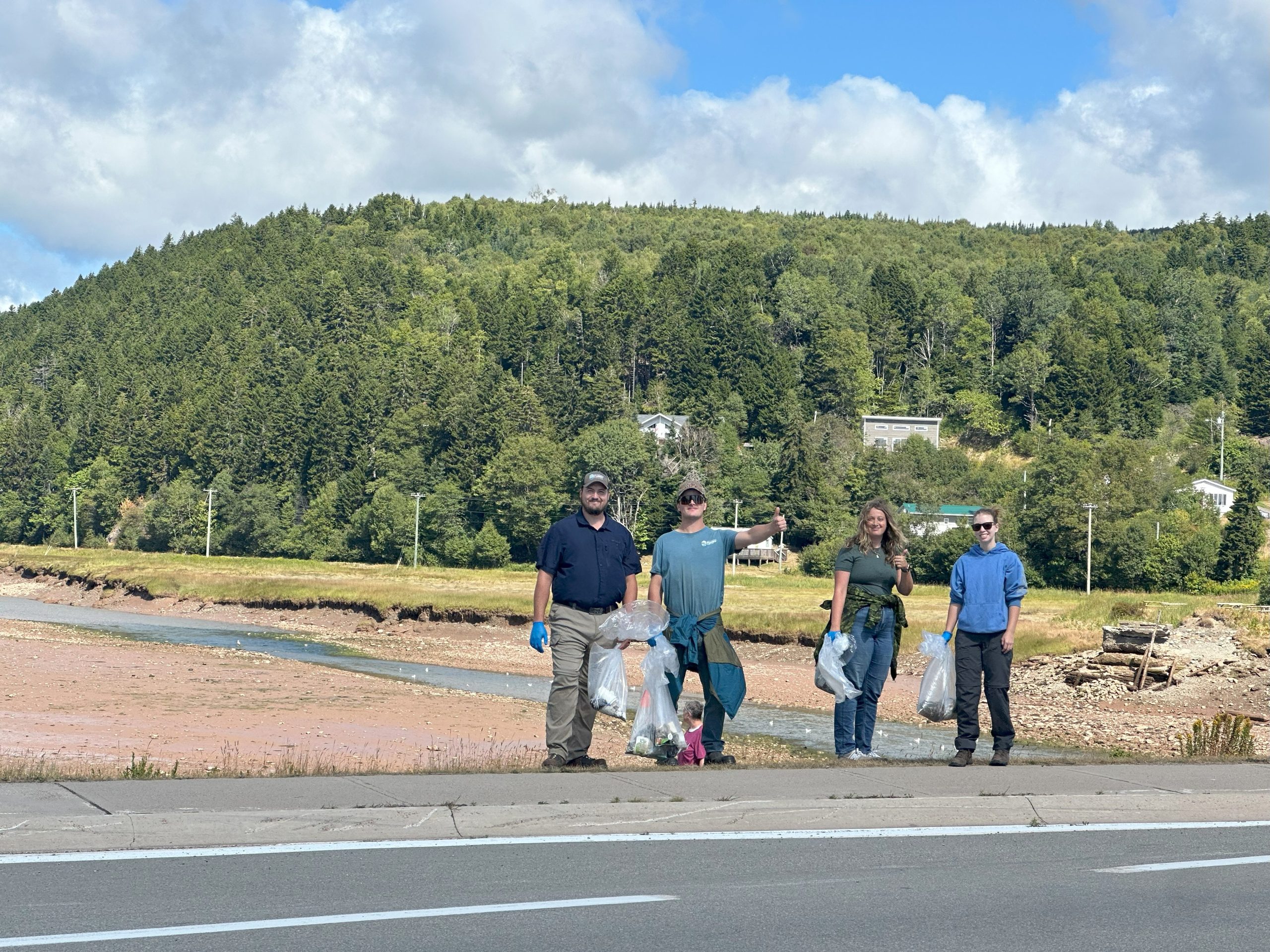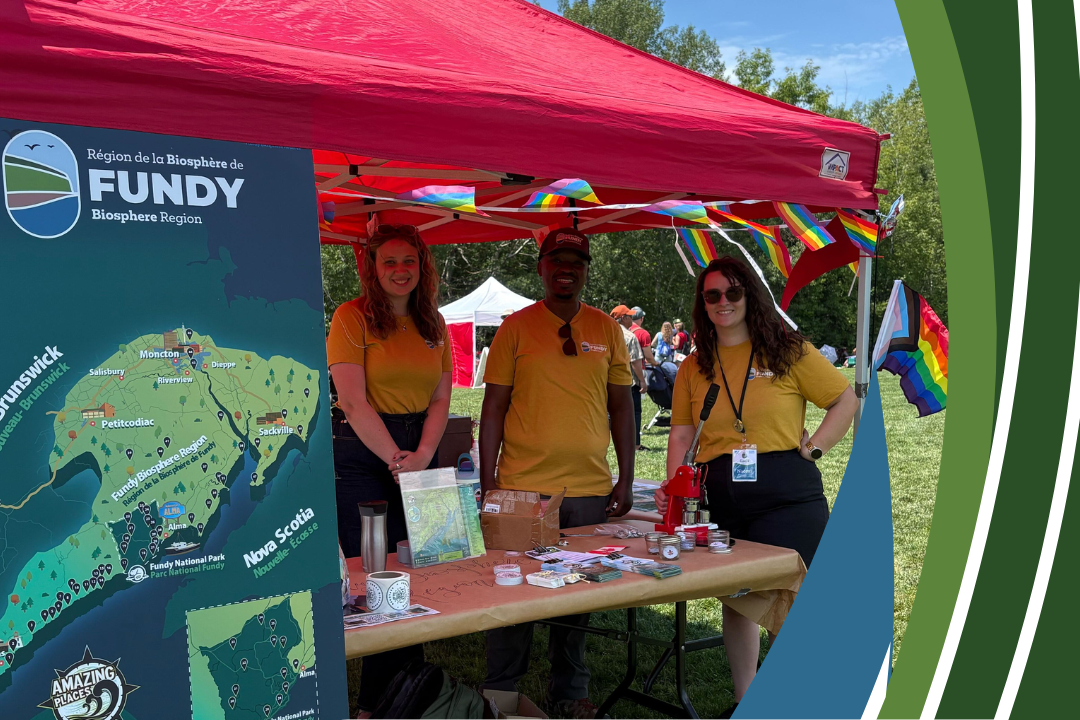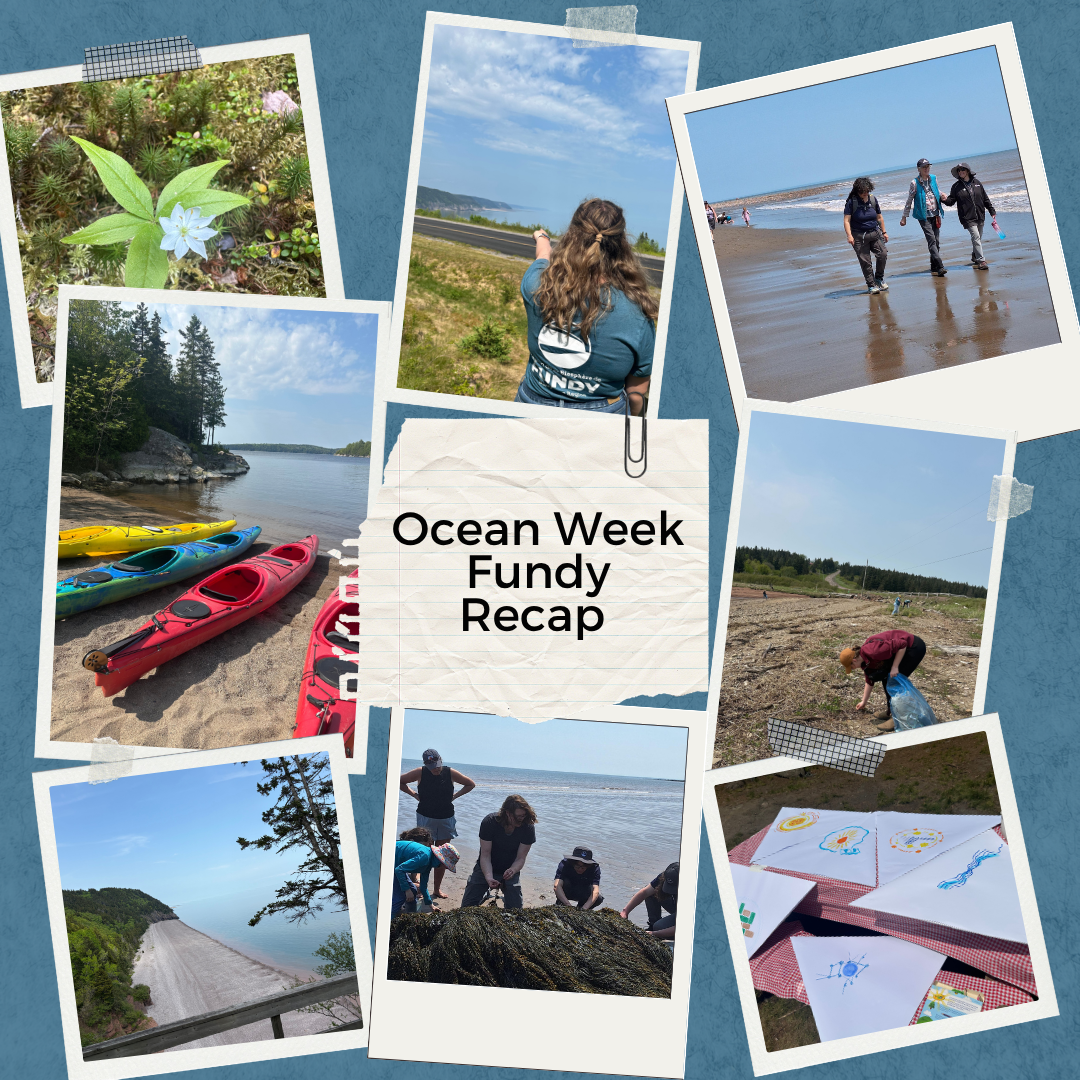by Jenna Cowie
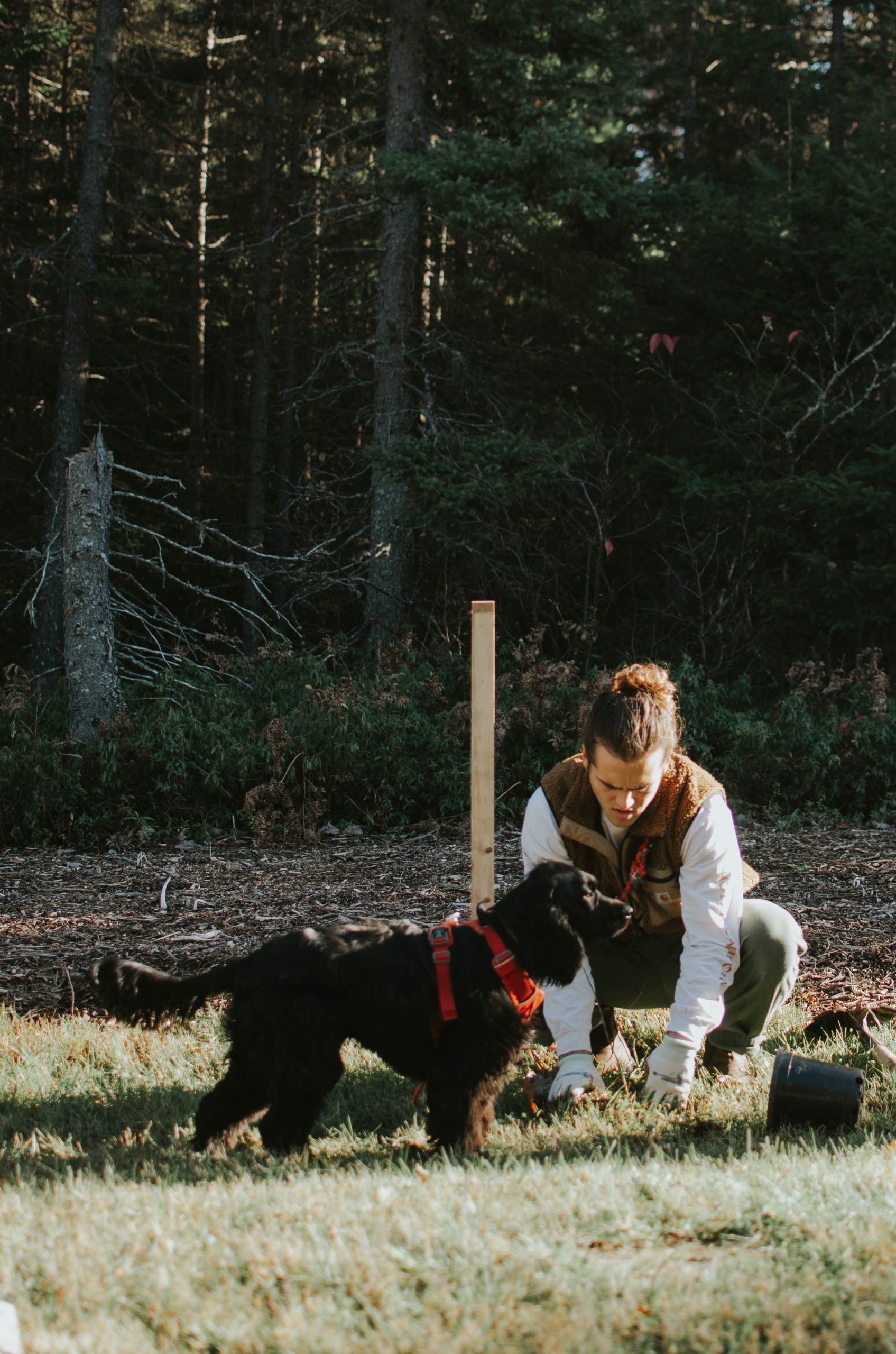
45k Milestone
As we wrap up the 2024 field season, we at Fundy Biosphere Region (FBR) are elated to share a remarkable achievement with you. Thanks to the unwavering support and the collaborative efforts of numerous dedicated partners, we’ve successfully planted 45 000 trees as part of our Forests of the Future program. This significant milestone represents more than just a number; it is a testament to our collective commitment to nurturing and preserving the remarkable ecosystems within the UNESCO-designated Fundy Biosphere Region.
Forests of the Future
FBR’s Forests of the Future program is an initiative that aims to bolster the long-term sustainability of both urban and rural forests in New Brunswick by increasing the presence of climate-resilient species and fostering the development of healthy, vibrant forests. This program includes projects that support the management of local forests, provide field data (bird surveys, tree carbon inventory surveys, etc.) to other organizations, and conserve the forests directly through activities like tree planting.
This summer’s tree planting milestone has been the product of 3 years of hard work by our staff, 10 landowners within 3 municipalities, and 6 partner organizations. This project was supported by generous funding from the Government of Canada’s 2 Billion Trees program, Environment and Climate Change Canada, and the New Brunswick Environmental Trust Fund, and is a vital effort to combat climate change and enhance ecological resilience. As we navigate the challenges posed by climate change, pest pressures, and the need for biodiversity conservation within the Wabanaki Forest community, we dedicate ourselves to identifying and implementing the most effective strategies for ensuring the future vitality of our forests.

The Wabanaki Forests: A Rich Tapestry of Life
The Wabanaki (Acadian) forest is particularly notable for being a unique transition zone between the more southern temperate hardwood forests and the northern boreal forests. This forest type stretches from New York in the North Eastern United States to the Atlantic provinces of Canada and covers 7% of Maritime provinces. This transitional area combines elements from both the temperate hardwood and boreal ecosystems, resulting in a rich blend of species and environmental features. The interaction between these forest types creates a dynamic and resilient ecological zone, characterized by a blend of tolerant hardwood and northern coniferous species, each adapted to specific conditions. This diversity enhances the forest’s ability to withstand environmental changes like extreme weather events and temperature fluctuations, since a mix of tree species that are each adapted to particular conditions will act as a buffer for the forest as a whole. The diversity of trees also supports a wide range of plant and animal life, including 40+ at-risk species like the Wood Thrush, Butternut and the Eastern Wood Peewee. Such rich abundance of life in this transitional zone makes it an invaluable area for preservation and the long-term conservation of biodiversity.
Distinguished by a rich tapestry of geographically distinct species and intricate environmental interactions, the Wabanaki forests are renowned for their unique ecological characteristics. These forests, shaped by a combination of natural processes and centuries of Indigenous stewardship, are home to a diverse array of flora and fauna. Hardwood species such as maple, oak, and beech provide critical habitat and support for various wildlife, offering resources like cavity nesting sites, leaf litter for shelter and food such as nuts, seed and fruits. Meanwhile, softwoods like spruce, fir, and pine deliver shelter in dense regenerating understories, along with protection from harsh weather and essential food sources during winter months. By planting a diverse range of 18 tree species, we aimed to replicate the natural forest structure and function of the Wabanaki forest, thus creating a habitat that supports a broad diversity of species while simultaneously increasing resiliency.
The Power of Trees: Why It Matters
Planting trees is more than a symbolic gesture; it is a critical action toward ensuring a sustainable future. Trees play a pivotal role in absorbing carbon dioxide, which helps mitigate the effects of climate change, while synchronously improving air quality by filtering pollutants. They foster biodiversity by providing essential habitats for a wide range of wildlife and supporting soil health through their root systems, which prevent erosion and enhance nutrient cycling. A tree canopy has been known to not only regulate ground temperature in forests, but in many cities as well. Furthermore, trees contribute to the overall balance of our ecosystems by controlling temperatures along waterways and managing water cycles.
The 45 000 trees planted in the past 3 years represent a significant step towards amplifying these benefits. By increasing the number of trees in our landscapes, we are not only enhancing ecological resilience but also helping to safeguard our natural environment for generations to come. This effort strengthens the ability of both people and nature to adapt to changing conditions, promoting long-term sustainability, and overall well-being for our communities and the ecosystems they depend on.
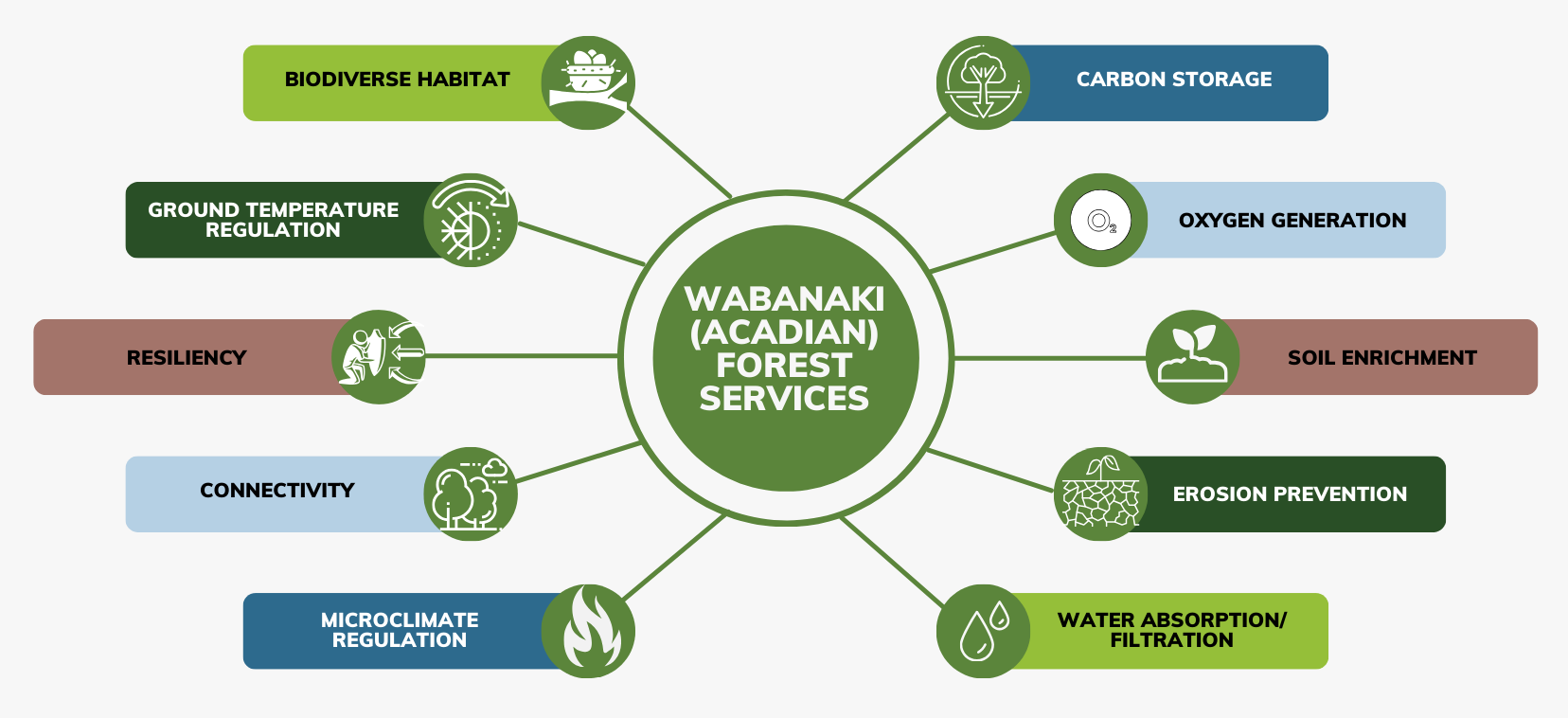
Local Impact: Communities Engaged and Empowered
The success of our tree-planting efforts is not just about the environmental benefits but also about the positive impact on local communities. Between 2021 and 2024, we focused on planting across three municipalities: Moncton, Riverview, and Salisbury. Engaging with residents has been an integral part of this initiative that enhances our local landscapes while strengthening community ties and fostering a shared sense of purpose. From organizing planting events to tree giveaways to educating community members about the importance of trees, the involvement of local community members has been crucial to the success of our initiative, as their dedication and hard work have significantly contributed to every stage of the project.
Looking Forward: The Future of Our Forests
As we reflect on the achievements of the 2024 field season, we are filled with optimism for the future. The 45 000 trees planted are just the beginning of our ongoing efforts to support and expand our commitment to Forests of the Future in Fundy Biosphere Region. In the coming years, we plan to establish our own nursery to grow trees that we are currently unable to source, and to increase our planting numbers year over year. Our focus will remain on continuing to restore and conserve our forests, adapting our strategies as needed to address emerging challenges and to embracing new opportunities. We will continue to work so that future generations will inherit a vibrant, thriving natural landscape that continues to flourish and provide essential ecological benefits for years to come.
We are excited to build on this success and explore new avenues for enhancing our environmental stewardship. Whether through further reforestation efforts, community engagement activities, or educational programs, our commitment remains unwavering, as we strive not only to restore and enhance these vital ecosystems but also to ensure climate resilience and conservation of biodiversity.
A Heartfelt Thank You
We extend our heartfelt thank you to everyone who has contributed to this endeavor. Your support has made it possible for us to reach this significant milestone and make a tangible difference in our community and environment. As we look ahead, we are grateful for your continued partnership and dedication to the cause. Together, we are making strides towards a greener, more sustainable future. Let’s continue to grow, thrive, and protect the natural treasures of our beautiful biosphere region.


